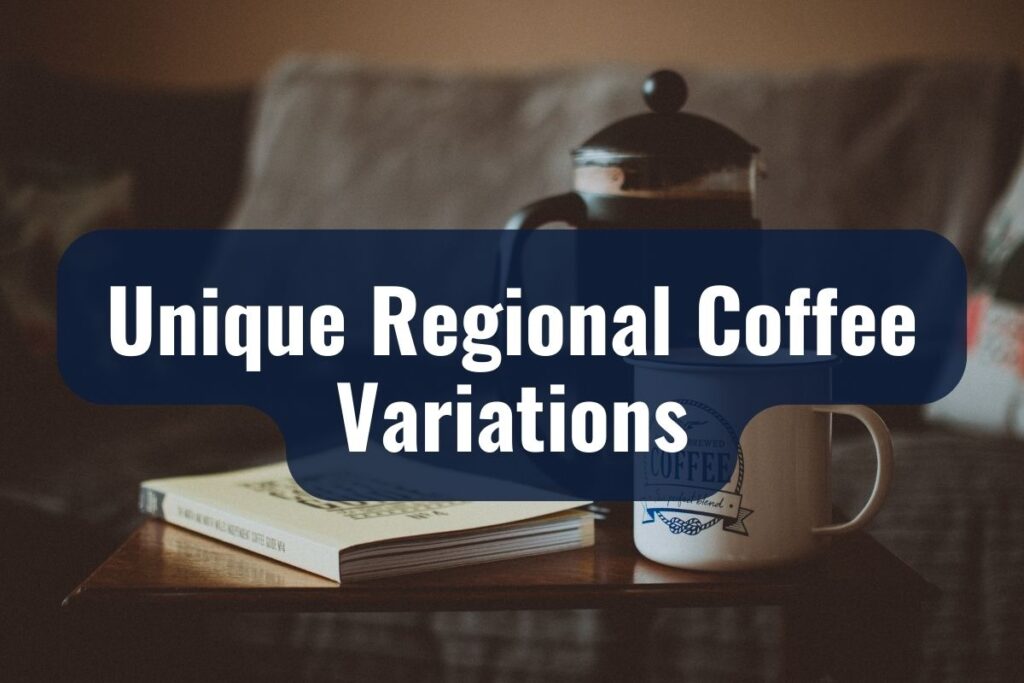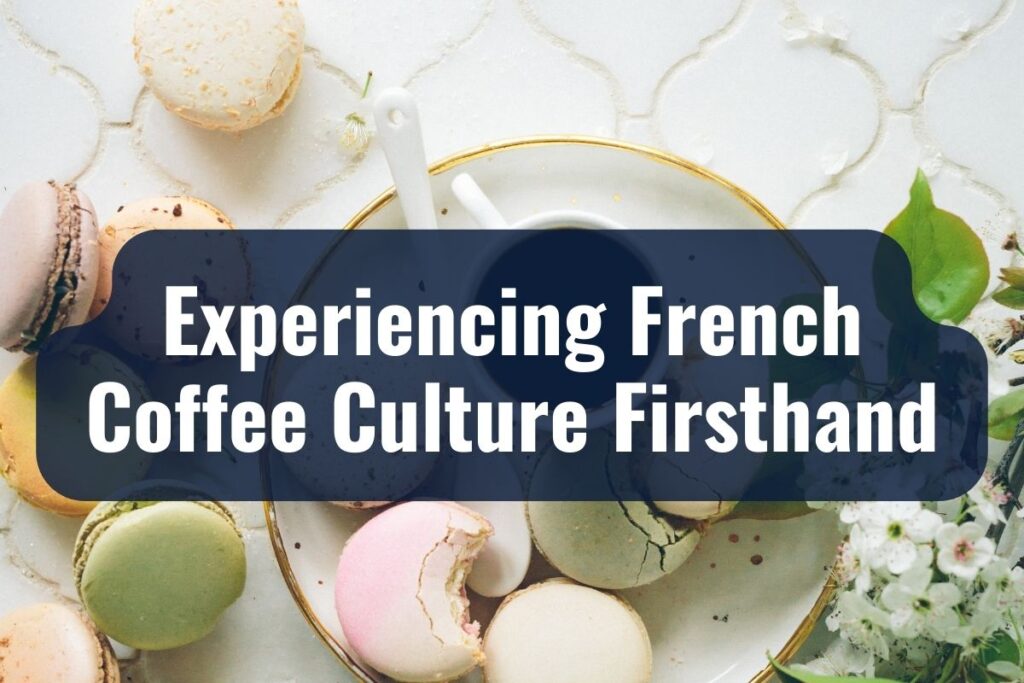France, with its picturesque cafés lining the streets of Paris and beyond, holds a revered place in the world of coffee. Steeped in tradition, coffee is not merely a beverage in this culturally rich country; it is a cornerstone of daily life and a symbol of French savoir-vivre.
The gentle clink of a coffee cup on a saucer, the hum of conversation, and the rich aroma wafting through the air are quintessential to the French café scene, an experience that transcends the mere act of sipping a brew.
KEY TAKEAWAYS
- French coffee culture intertwines daily life with traditional and contemporary coffee practices.
- Understanding French coffee etiquette can enhance social interactions.
- Regional coffee variations reflect France’s diverse cultural landscape.
- French cafés serve as central hubs for community and cultural life.
- Navigating a French café menu involves both classic coffee options and light snacks.
- France is progressively embracing specialty coffee and sustainable practices.
The Role of Cafés in French Social Life
In France, cafés are not just establishments where one goes to drink coffee; they are cultural institutions. Here, the art of leisure is practiced with a religious fervor, and cafés serve as its temples.
They are places of communion, where the pace of life slows down, allowing people to savor the moment. The café terraces offer a vantage point to observe the tapestry of French life, and inside, they provide a warm refuge to discuss politics, philosophy, or simply enjoy the company of friends.
Types of Coffee Commonly Consumed in France
As you stroll through the cobbled streets of France, the scent of freshly brewed coffee is a constant companion, guiding you to the many cafés each with their own take on this beloved drink. The types of coffee consumed in France are reflections of the country’s culinary precision and preference for quality over quantity.
| French Term | English Equivalent | Description |
| Un café | Espresso | A strong, concentrated coffee served in a small cup |
| Café allongé | Americano | An espresso with added hot water for a milder taste |
| Café crème | Café latte | Espresso with steamed milk and a little foam |
| Noisette | Macchiato | An espresso with a dash of milk or cream |
| Café au lait | Latte | Coffee with an equal amount of milk typically served at breakfast |
| Déca | Decaf | Short for ‘décaféiné‘, coffee without the caffeine |
Espresso (Café Express)
The heartbeat of French coffee, and often just referred to as un café, is the espresso. It’s a strong shot of coffee that packs a punch in a small cup. Served with a glass of water on the side, an espresso is often enjoyed quickly while standing at the bar, or leisurely at a table, typically after a meal.
Café Crème
A café crème is the French answer to the cappuccino, albeit usually less frothy and without the cocoa powder on top. This is a popular choice for breakfast in France, a larger cup of espresso with a generous amount of creamy milk, perfect for dipping a croissant or a piece of baguette.
Café au Lait
While similar to a café crème, a café au lait is traditionally consumed in the comfort of one’s home, often served in a wider bowl that allows for the dipping of breakfast bread. It’s a simple yet delightful combination of equal parts steamed milk and freshly brewed coffee.
Noisette
Named after the French word for hazelnut due to its rich, nutty color, a noisette is an espresso with a dash of milk or cream. It is slightly milder than a straight espresso and can be enjoyed throughout the day.
Café Filtre
Although less common in France compared to other types of coffee, café filtre, or filtered coffee, is gaining popularity. It is similar to the American style of brewed coffee, served in a larger cup, and offers a milder flavor profile compared to its espresso-based counterparts.
Understanding French Coffee Etiquette

Navigating the nuanced world of French coffee culture involves more than simply knowing the menu; it requires an understanding of the local coffee etiquette. This unspoken code of conduct guides locals and can be a fascinating aspect for foreigners to observe and learn.
Ordering Coffee in France
When ordering coffee in France, the time of day can dictate what you might choose to drink. Mornings are reserved for milky coffees like café crème or café au lait, usually enjoyed with a pastry or a slice of baguette. After lunch, it’s more common to order a short, sharp espresso to finish off the meal and aid digestion.
When to Drink What Type of Coffee
In France, there’s a certain rhythm to drinking coffee that aligns with the daily ebb and flow of life. Espresso, for example, is an all-day affair but is particularly associated with the end of a meal. Asking for a café crème after lunch or dinner might elicit a polite but knowing glance from the waiter, as this milky coffee is typically a morning drink.
Tipping at French Cafés
Tipping in France is more of a gesture than an obligation. Service charge is usually included in the price, but it is customary to leave small change for good service – perhaps the leftover coins from your payment. It’s not expected, but it’s always appreciated.
Popular Preparation Methods
In France, the preparation of coffee is considered an art form, a ritualistic practice that is both precise and deliberate. This dedication to the craft of coffee-making is evident in the popularity of certain methods favored in homes and cafés across the country.
The Art of the French Press
In many French households, the French press, known locally as a ‘cafetière à piston‘, is a beloved method for brewing coffee. It is revered for its ability to extract full-bodied flavors and oils from the coffee grounds, resulting in a richer cup of coffee. The process of steeping the grounds and then pressing them down with the plunger is a morning ceremony that many take great pleasure in.
Espresso Machine Dominance in Cafés
In cafés, the espresso machine reigns supreme. Baristas master the complex machinery to pull the perfect espresso shot with a balance of crema, body, and aroma. This method is not just about the end product but also the skill and performance involved in its creation often carried out in full view of the patrons.
Home Preparation Styles
For those who prefer the comfort of home-prepared coffee, there is a variety of methods. Some use simple stovetop espresso makers, known as ‘cafetières italiennes‘ in France, which are both practical and produce a coffee with intensity similar to that found in a café. Others may opt for the use of pod-based machines, which while not traditional, offer convenience and consistency.
Unique Regional Coffee Variations

The allure of French coffee culture is not only in its national staples but also in its regional specialties. Each corner of France has its unique twist on coffee, a nod to the local customs, and sometimes, the influence of nearby borders.
Le Café Provençal (or Café du Monde)
In the sun-drenched region of Provence, you may come across a ‘Café Provençal,’ also known colloquially as ‘Café du Monde.’ This is a sweet treat, often taken in the afternoon, where coffee is flavored with hints of orange or lemon zest and sometimes a touch of local liqueur. It reflects the sunny disposition of the south and its penchant for citrus and aromatic herbs.
Corsican Coffee
Venture to the island of Corsica and you’ll discover that their coffee often comes with a hint of chestnut – a nod to the chestnut trees covering the island’s landscape. This subtle addition complements the robust flavor of coffee with a smooth, nutty essence that is distinctively Corsican.
The Influence of Neighboring Countries on Border Regions
Closer to France’s borders, coffee blends the French tradition with the influences of neighboring cultures. Near the Italian border, for instance, you may find a stronger preference for espresso, a direct influence of Italy’s coffee culture.
In the Alsace region, bordering Germany, a ‘Café Allemand‘ or ‘Kaffee Schümli‘ might be offered, showcasing a milder, filter-like coffee topped with whipped cream, reflecting the Germanic taste for softer, sweeter coffee drinks.
The French Café: More Than Just a Place for Coffee
The French café is an institution, a cornerstone of city streets and village squares. It is where the pulse of France’s social life can be felt most vividly, amid the clatter of saucers and the clinking of spoons. To step into a French café is to step into a living tapestry of French society.
Description of a Typical French Café
A typical French café is a place where the decor often carries the patina of time, and the furniture, though perhaps slightly mismatched, offers a warm welcome. The ambiance is a blend of quiet contemplation and the gentle buzz of conversation.
Here, people from all walks of life gather: the hurried businessperson pausing for a quick espresso, the leisurely reader soaking in the morning news, or the group of friends sharing lively discussion over a round of café crèmes.
The Role of the Café as a Community Hub
For many, the café serves as a communal hub—the original social network. It’s a place where news is exchanged, where relationships are formed and maintained, and where the matters of the day are debated heatedly or pondered over slowly.
In smaller towns, the local café might also serve as the post office or a general store, further embedding it as a vital thread in the fabric of the community.
Cultural Significance of the Café in French Literature and Cinema
The significance of the French café extends into the realms of literature and cinema. It has been the setting for countless novels, poems, and films, serving as both muse and backdrop to stories of love, intrigue, and philosophy.
The café is where artists and intellectuals of past eras, like Jean-Paul Sartre and Simone de Beauvoir, sought refuge and inspiration, penning works that would come to define a generation.

Approaching the counter of a French café presents an array of choices. The menu, often written in elegant cursive on a chalkboard, is a gateway to France’s coffee culture. Understanding the offerings is key to enjoying the full spectrum of experiences available in these cherished establishments.
Deciphering Coffee Choices
On the menu, you’ll find classics like ‘un café‘ indicating a simple yet potent espresso, or a ‘café allongé‘, which is an espresso with more water, akin to the Americano. For those who favor a milky concoction, options include the ‘café crème‘ and ‘café au lait‘, with the former being the café version and the latter typically served at home.
Beyond Coffee: Other Café Offerings
While coffee is the star, the French café menu often extends beyond. ‘Chocolat chaud‘ is a rich, velvety hot chocolate, perfect for those cooler days or when you crave something sweet.
‘Thé‘ means tea, and it comes in various forms, from a robust ‘thé noir‘ (black tea) to a delicate ‘thé vert‘ (green tea). Some cafés might also offer herbal infusions, known as ‘tisanes‘, for a caffeine-free alternative.
Nibbles and Treats to Accompany Your Drink
Pairing your beverage with a light snack is not uncommon. Pastries like croissants and pain au chocolat are morning staples, while later in the day, you might indulge in a tart or quiche.
The café gourmand is a particular delight, offering a coffee served with a selection of miniature desserts—a showcase of both flavor and French culinary finesse.
The Future of Coffee in France
In France, the reverence for tradition is often balanced with a progressive embrace of the new. The future of coffee in this country appears to be a harmonious blend of respect for its rich heritage and the adoption of contemporary trends that resonate with a new generation of coffee enthusiasts.
Embracing Specialty Coffee and Sustainability
There is a growing movement in France towards specialty coffee—beans that are carefully sourced, expertly roasted, and skillfully brewed to highlight their unique flavors. This shift is accompanied by a heightened awareness of sustainability and ethical sourcing, with more consumers asking about the origins of their coffee and the conditions under which it was produced.
The Rise of Artisanal Coffee Shops and Baristas
Artisanal coffee shops are burgeoning, especially in urban centers where the demand for high-quality, craft coffee continues to rise. These establishments are often run by professional baristas who not only understand the science of coffee but also regard coffee-making as an expressive art form. Their influence is expanding the public’s palate and expectations when it comes to coffee.
Technology and Innovation in Coffee Brewing
Technological advancements are making their way into the French coffee scene, from sophisticated espresso machines that offer unparalleled precision to apps that allow customers to order and pay for their coffee remotely. These innovations enhance the coffee experience, making it more accessible and tailored to individual preferences.
The Continual Blend of Coffee Cultures
As France becomes increasingly multicultural, its coffee culture absorbs influences from around the world. This cross-pollination is introducing French consumers to different ways of enjoying coffee, from the spiced coffees of the Middle East to the iced concoctions popular in the United States, suggesting a future where diversity in coffee offerings becomes the norm.
Experiencing French Coffee Culture Firsthand

To truly immerse oneself in French coffee culture, it’s essential to experience it where it lives and breathes: in the bustling cafés, the quiet corners of Parisian streets, or the sunlit terraces of the Riviera. It’s in these spaces that the tapestry of French life is interwoven with the love for coffee.
Joining the Morning Ritual
Begin your journey into French coffee culture with the morning ritual. Step into a local boulangerie, select a fresh viennoiserie, and take it to a nearby café. Order a ‘café crème‘ and watch as the city awakens, the scent of fresh espresso mingling with the crisp morning air.
Café Hopping
Spend an afternoon café hopping to appreciate the full spectrum of French coffee. From the traditional ‘cafés’ that have stood the test of time, to the new wave of ‘cafés-boutiques’ that offer single-origin roasts and cold brews, each café has its own character and specialty.
Engaging with Baristas
Don’t hesitate to engage with baristas. These coffee experts are often eager to share their knowledge and passion. They can provide insights into the nuances of their craft, from the origin of the beans to the subtleties of brewing techniques.
Participating in a Coffee Workshop
For those looking to dive deeper, participate in a coffee workshop or tasting session. Such experiences can provide a hands-on understanding of the coffee process from bean to cup, and are increasingly popular in French cities.
Observing the Rhythms of Café Life
Finally, allow yourself to simply sit and observe. Watch as people come and go, as conversations flow around you, as the day shifts from the rush of morning to the leisure of the evening. This observational ritual is as much a part of coffee culture as the drinking of the coffee itself.


